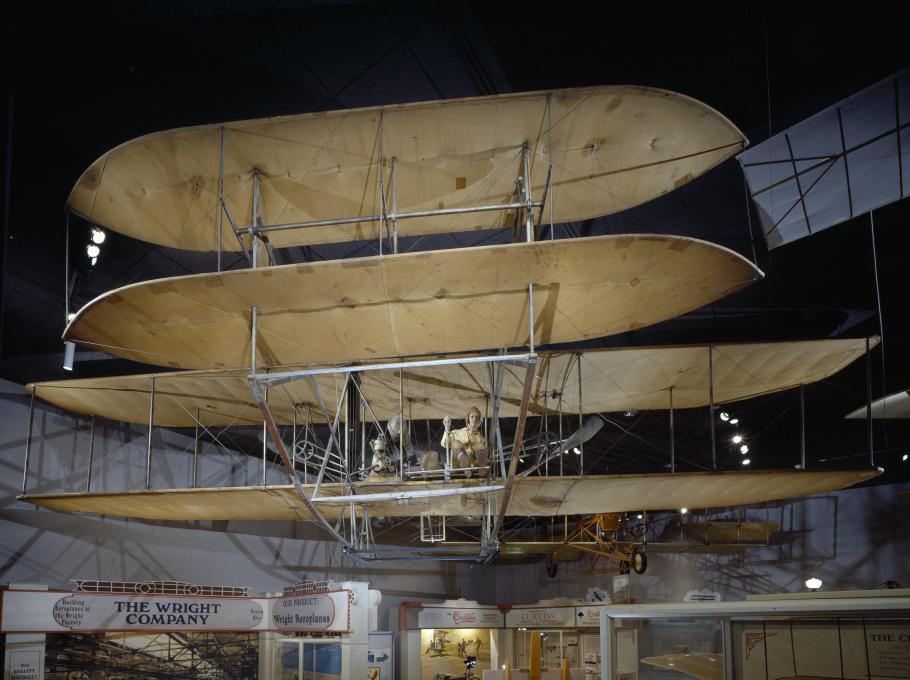This summer, the world is marking the 40th anniversary of one of the greatest milestones in aerospace history, and one of the most remarkable of all human achievements—the first Moon landing by Apollo 11. But the summer of 2009 also marks another meaningful event in aerospace history. It is the centennial of military aviation. Almost from the outset of successful human flight following the Wright brothers’ breakthrough flights in 1903, the application of this new technology for military purposes was discussed and speculated upon. Just as most recognized the airplane would change the world in general, many foresaw, with a fair degree of accuracy, that the airplane would have profound implications for warfare and military defense. The National Air and Space Museum famously has in its collection the original 1903 Wright Flyer, but the Museum also possesses the 1909 Wright Military Flyer, the world’s first military airplane. After bringing their design to a level of practicality in 1905, the Wright brothers set about finding a customer for their invention. An obvious choice was the U.S. Army, who had already been developing an aeronautical program with lighter-than-air vehicles. In 1908, the U.S. Army Signal Corps advertised for bids for a two-seat observation aircraft, and Orville Wright came to Fort Myer, Va., with a Wright machine to demonstrate and attempt to meet the Army’s performance requirements. Midway through the trials, on September 17, 1908, the Wright airplane malfunctioned and crashed, severely injuring Orville and killing his passenger, the Army’s official observer, Lt. Thomas E. Selfridge. Both Wilbur and Orville returned to Fort Myer in 1909 with a new airplane and successfully completed the trials. On August 2, 1909, the Signal Corps officially accepted the Wright airplane, the first purchased and put into service by any government. The 1909 Wright Military Flyer served until 1911, training Army pilots, and was then transferred to the Smithsonian Institution for public display. It is the seed that spawned the military aerospace industry, and a significant portion of aviation history. In these modern times, when it is almost impossible to talk about military actions without an aviation component, I often think of a quote from Orville Wright, who during World War II was asked if he had any regrets about inventing the airplane in light of the massive destruction then being wrought from the air. He replied: “I don’t have any regrets … . I feel about the airplane much the same as I do in regard to fire. I regret all the terrible damage caused by fire. But I think it is good for the human race that someone discovered how to … put fire to thousands of important uses.” Of course, when reflecting upon the military applications of flight technology, its destructive and somber elements must never be dismissed. But we must also appreciate and admire the skills, goals, and accomplishments with which military aviators have employed the Wrights’ invention. In 2009 we observe a century of military aviation, and it all began with that frail Wright machine that hangs in the National Air and Space Museum.

